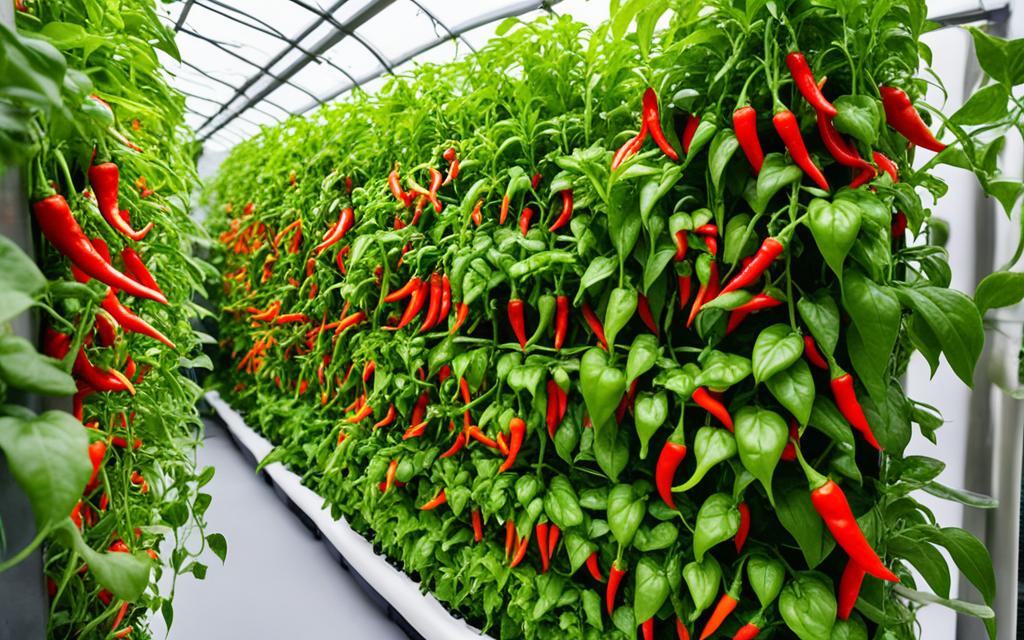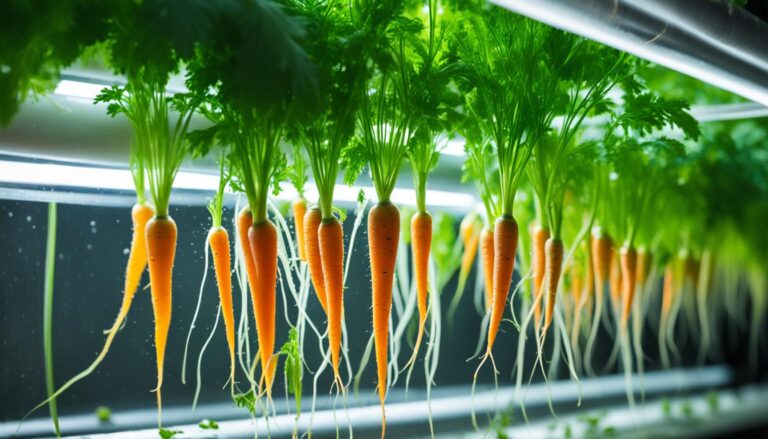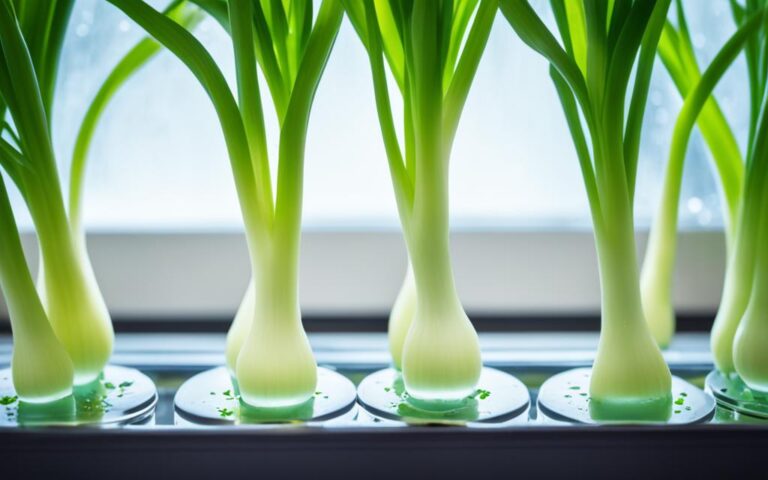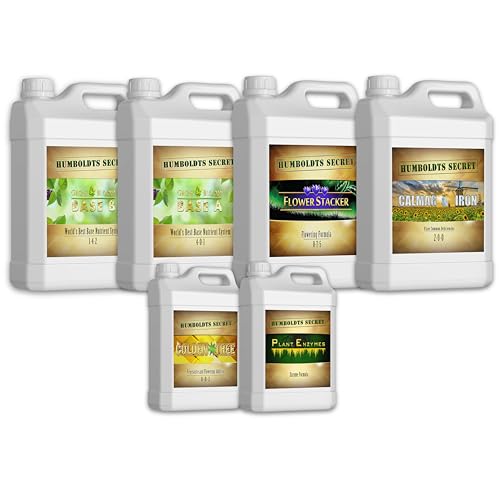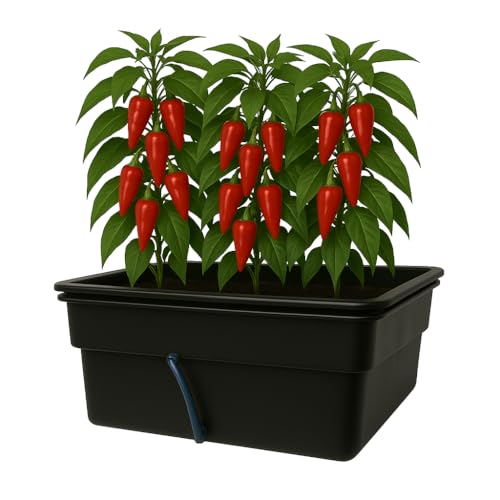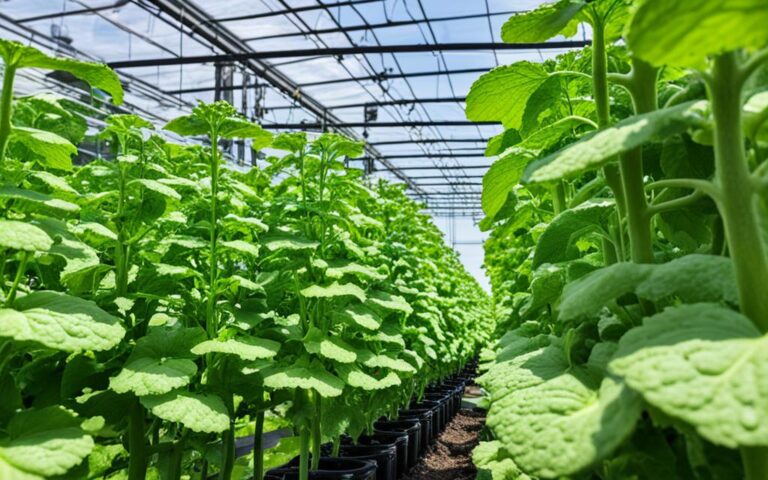Hydroponic Chili Peppers: Grow Spicy at Home
Did you know the global hydroponic farming market is set to hit $32 billion by 2025? This growth is fueled by a rise in demand for fresh, locally-grown produce. Chili peppers are a big part of this trend. Now, you can grow these spicy peppers at home, no matter the climate or space.
We’re going to explore hydroponic chili peppers and how to grow them indoors. You’ll learn about choosing the best hydroponic system, managing nutrients, lighting, and pollination. This will help you get the most out of your homegrown chili peppers.
Key Takeaways
- The global hydroponic farming market is expected to reach $32 billion by 2025, driven by the demand for fresh, locally-grown produce.
- Hydroponic gardening allows you to cultivate chili peppers indoors, regardless of climate or space constraints.
- This article will cover the essential steps and requirements for growing hydroponic chili peppers, including system selection, nutrient management, lighting, and more.
- Mastering the art of hydroponic chili pepper cultivation can help you enjoy a steady supply of spicy goodness year-round.
- With the right techniques, you can maximize your yields and enjoy the fresh, flavorful peppers you’ve grown yourself.
Table of Contents
Introduction to Growing Hydroponic Chili Peppers
Growing chili peppers with hydroponics has many benefits over traditional gardening. These systems let you control nutrients, water, and conditions perfectly. This means you can enjoy tasty chili peppers all year in your own home.
One big plus of growing hydroponic chili peppers is getting the best growing conditions. You can adjust things like pH, nutrients, and temperature. This ensures your chili peppers grow strong and healthy.
Hydroponic chili pepper cultivation also uses less water than traditional gardens. Hydroponics recycles water and cuts down on waste. It’s a green way to grow indoor chili peppers.
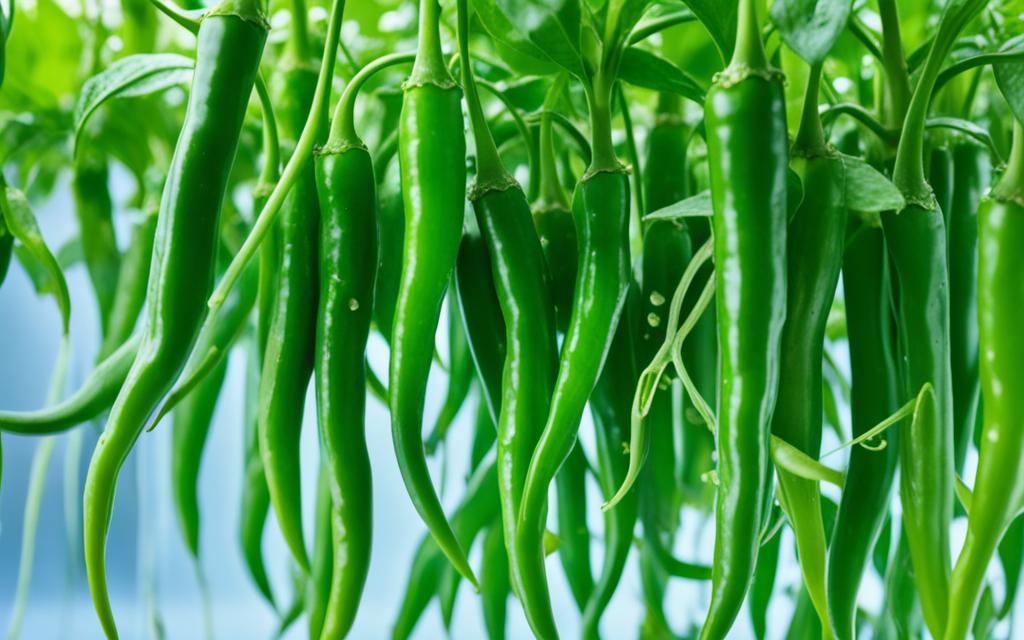
Another advantage of growing hydroponic chili peppers is fighting pests and diseases. Growing your chili peppers indoors means fewer problems with pests and stress. This makes your garden healthier.
Whether you’re new to gardening or have years of experience, hydroponic chili pepper cultivation is rewarding. It lets you grow your own delicious, top-quality chili peppers all year.
Selecting the Right Hydroponic System
Choosing the right hydroponic system is key when growing chili peppers. Each system has its own benefits and best practices for your plants. Let’s look at three popular options: Deep Water Culture (DWC), Nutrient Film Technique (NFT), and Drip Systems.
Deep Water Culture (DWC) System
The DWC system is a simple yet effective way to grow best hydroponic system for chili peppers. It keeps the roots in a nutrient-rich water solution. This method ensures a constant supply of water and nutrients. Plus, it keeps the roots well-oxygenated, helping your chili peppers grow strong and healthy.
Nutrient Film Technique (NFT) System
The NFT system is another great choice for nutrient film technique (NFT) for chili peppers. It uses a shallow stream of nutrient-rich water over the roots. This method is efficient, fitting more plants in a small space.
Drip System
The Drip System is a flexible choice for drip system for chili peppers. It uses tubes and emitters to deliver water and nutrients right to the roots. This system is great for chili peppers, offering precise control over water and nutrients. It helps prevent waste and supports healthy growth.
When picking a hydroponic system for your chili peppers, think about space, budget, and your gardening skills. Each system has its pros. With the right setup and care, you can have a successful hydroponic chili pepper garden.
Best Chili Pepper Varieties for Hydroponics
In hydroponic gardening, not all chili pepper types are the same. Some do much better in the controlled hydroponic environment. Let’s look at some top chili pepper types for hydroponics.
Sweet bell peppers are a favorite among hydroponic growers. They’re easy to grow and give big harvests. For a spicy kick, try jalapeños, habaneros, or serranos. These hot peppers work great in hydroponics and add flavor to your food.
For a milder taste, hydroponic sweet peppers are great. They mix sweetness and crunch well, making them versatile in cooking. Consider miniature or dwarf pepper types too. They fit well in small hydroponic spaces.
- Thai peppers: Known for their vibrant colors and intense heat, Thai peppers are a popular choice for hydroponic gardeners.
- Paprika peppers: These peppers are prized for their unique flavor and are well-suited for hydroponic cultivation.
- Cuban red peppers: With their bold, smoky flavor, Cuban red peppers thrive in hydroponic setups and add a touch of Caribbean flair to your kitchen.
- Pimento peppers: These heart-shaped peppers are not only visually appealing but also excel in hydroponic systems, offering a sweet and mild taste.
When picking chili pepper types for your hydroponic garden, think about heat level, flavor, and growth habits. Try different peppers to see which ones work best in your setup.
Germinating Chili Pepper Seeds
Starting with high-quality seeds is key when growing hydroponic chili peppers. The process of germinating chili pepper seeds hydroponically needs careful attention. You must focus on the growing medium, planting, and the environment.
Preparing the Growing Medium
The growing medium is crucial for seed germination. Many choose rockwool or oasis cubes. These materials offer the right mix of air, water, and nutrients for the seeds.
Planting and Labeling Seeds
For successful chili pepper seed starting, plant seeds 1/4 to 1/2 inch deep. It’s important to label each type of chili pepper seedlings for hydroponics. This helps track their growth and when they’ll be ready.
Providing Optimal Conditions
- Keep the temperature warm, between 75-85°F (24-29°C), for germinating chili pepper seeds hydroponically.
- Make sure the growing medium is moist but not too wet.
- Give the seedlings plenty of indirect light to grow well.
By following these steps for chili pepper seed starting and growing chili pepper seedlings for hydroponics, you’ll lay a strong foundation. This will help your hydroponic chili pepper crop thrive.
Setting Up Your Hydroponic System
To grow chili peppers hydroponically, you need to set up your system right. You can use a Deep Water Culture (DWC), Nutrient Film Technique (NFT), or Drip system. The goal is to make sure all parts work well together to support your plants.
Here are the steps to set up a hydroponic system for chili peppers:
- Pick a container or grow tray that fits your chili pepper plants’ root system.
- Figure out how big your water reservoir needs to be for your plants and system.
- Install a water pump to move the nutrient-rich solution around the system.
- Put in the grow medium, like clay pebbles or coco coir, for the plants to grow on.
- Make sure the system has good drainage and air flow for healthy roots.
- Use environmental controls, like temperature and humidity regulators, to keep conditions perfect.
- Check the pH and electrical conductivity (EC) levels of the nutrient solution to keep it balanced.
By setting up a hydroponic chili pepper cultivation system carefully, you can make a great place for your spicy plants to grow. With the right setup, you’ll soon have a lot of homegrown chili peppers.
“Growing chili peppers hydroponically allows you to control every aspect of their environment, leading to consistent and impressive yields.”
Nutrient Management for hydroponic Chili Peppers
For hydroponic chili peppers to grow well, you need to manage their nutrients carefully. It’s important to know what nutrients they need and keep the right pH and EC levels in the solution. This helps get a good harvest.
Essential Nutrients
Chili pepper plants need a mix of macronutrients and micronutrients to do well in hydroponics. The main macronutrients are nitrogen (N), phosphorus (P), and potassium (K). These help with growth, flowering, and making fruit. They also need smaller amounts of calcium (Ca), magnesium (Mg), and sulfur (S), plus micronutrients like iron (Fe), boron (B), copper (Cu), manganese (Mn), zinc (Zn), and molybdenum (Mo).
pH and EC Levels
Keeping the right pH and EC levels in the hydroponic solution is key for good nutrient uptake and plant health. The ideal pH for chili peppers is between 5.5 and 6.5. This lets them absorb nutrients best. The EC level should be between 1.8 and 2.5 mS/cm. This range ensures plants get the nutrients they need for healthy growth and fruiting.
By keeping an eye on nutrient levels, pH, and EC, you can make sure your chili pepper plants get what they need. This leads to a lot of tasty, spicy peppers.
Lighting and Temperature Requirements
Getting the right mix of light and temperature is key for hydroponic chili peppers to grow well. These factors are crucial for photosynthesis, flowering, and growth.
Lighting Requirements for Hydroponic Chili Peppers
Chili peppers need lots of strong light, about 12 to 16 hours a day. They do best with a mix of red, blue, and far-red light. This helps with leaf growth and making fruit.
- Recommended light intensity: 400-800 micromoles per square meter per second (μmol/m²/s)
- Preferred light spectrum: 6000-6500K color temperature
- Photoperiod: 12-16 hours of direct light per day
Temperature Requirements for Hydroponic Chili Peppers
Chili peppers love warm and steady temperatures. The best day time is between 70-85°F (21-29°C). At night, it should be around 60-70°F (15-21°C). Keeping these temperatures steady helps plants grow strong and produce fruit well.
- Ideal daytime temperature: 70-85°F (21-29°C)
- Ideal nighttime temperature: 60-70°F (15-21°C)
- Avoid temperature fluctuations and sudden changes
By managing the lighting requirements for hydroponic chili peppers and temperature requirements for hydroponic chili peppers well, growers can create the best environment. This leads to a great harvest.
“The right balance of light and temperature is the key to unlocking the full potential of hydroponic chili peppers.”
Pollination and Pruning Techniques
To get a lot of chili peppers from your hydroponic plants, you need to know about pollination and pruning. These steps are key to getting more chili peppers from your hydroponic setup.
Pollinating Hydroponic Chili Peppers
Chili pepper flowers need help to make fruit. You can do this by gently shaking the stems or using a small brush to move pollen between flowers. Pollinating hydroponic chili peppers often, especially when they’re flowering, makes sure you get a lot of peppers.
Pruning Hydroponic Chili Peppers
Pruning your hydroponic chili peppers is important for their health and growth. Take off any dead, damaged, or sick leaves and stems. Also, cut back some of the plant’s leaves to let air and light in. This helps the peppers grow better and maximize chili pepper yields in hydroponics.
Learning how to pollinate and prune your hydroponic chili pepper plants helps you get the most out of them. This way, you can enjoy a steady supply of tasty and spicy peppers right at home.
Common Issues and Troubleshooting
Even with careful attention, hydroponic chili pepper growers may face common problems. Pests, diseases, and nutrient shortages are key challenges. It’s vital to tackle these issues to keep your chili pepper plants healthy and productive.
Identifying and Addressing Pests
Pests are a big concern in growing hydroponic chili peppers. Aphids, spider mites, and thrips are common pests that can harm your plants. Look for signs of pests like discolored leaves, webs, or the pests themselves.
Use strategies like beneficial insects, organic pesticides, and clean practices to fight pests. This will help keep your plants safe.
Nutrient Deficiencies
Nutrient shortages can be a big problem for hydroponic chili peppers. Signs include slow growth, leaves that look unhealthy, and fewer fruits. Keep an eye on the pH and EC levels of your nutrient solution.
Make sure your plants get the right nutrients. Adjust your feeding schedule as needed to keep your plants healthy.
| Common Chili Pepper Deficiencies | Symptoms | Recommended Remedy |
|---|---|---|
| Nitrogen Deficiency | Yellowing of older leaves, stunted growth | Increase nitrogen levels in nutrient solution |
| Phosphorus Deficiency | Purplish-red discoloration of leaves, poor root development | Increase phosphorus levels in nutrient solution |
| Potassium Deficiency | Curling and scorching of leaf edges, reduced fruit production | Increase potassium levels in nutrient solution |
By being alert and fixing these common issues, growers can have a successful harvest of hydroponic chili peppers.
Harvesting Your Hydroponic Chili Peppers
The moment you’ve been waiting for has arrived – it’s time to harvest your homegrown hydroponic chili peppers! Knowing when to harvest and how to do it right is key to enjoying your crop’s full flavor and spice.
To figure out the best time to pick hydroponic chili peppers, watch for these ripeness signs:
- The chili peppers have reached their full size and color, typically a deep, vibrant hue.
- The skin of the pepper has a slight sheen and is firm to the touch.
- The stem of the pepper is beginning to wrinkle and turn brown.
Here are the best ways to harvest hydroponic chili peppers:
- Gently grasp the pepper near the stem and twist it while pulling upwards. This will detach the pepper from the plant.
- Avoid pulling or cutting the peppers, as this can damage the plant and stop it from growing more.
- Harvest in the morning when the signs of chili pepper ripeness in hydroponics are most visible.
- Be gentle when handling the peppers to prevent bruising or damage, which can cause them to spoil quickly.
| Harvesting Stage | Recommended Technique |
|---|---|
| Early Ripening | Gently twist and pull the pepper from the plant |
| Full Ripeness | Snap the pepper off at the stem with a quick, clean motion |
| Overripe | Avoid harvesting, as the pepper may be too soft and flavorless |
By identifying the chili pepper ripeness in hydroponics and using the right harvesting methods, you can get a great yield from your hydroponic chili pepper garden.
“The secret to growing the perfect hydroponic chili pepper is all in the timing of the harvest.”
Tips for Maximizing Yield
To get the most from your hydroponic chili pepper setup, try these tips. They help increase yields by optimizing nutrients and conditions. Also, pruning and training your plants can make a big difference.
Optimize Nutrient Levels
Getting the right balance of nutrients is key for high yields in hydroponics. Check the pH and EC levels of your nutrient solution often. Adjust them to make sure your plants get the right amount of nutrients like nitrogen, phosphorus, and potassium.
Maintain Ideal Environmental Conditions
Chili peppers love warm, bright places. Make sure your setup has the right temperature, humidity, and light for them. Use extra lights or climate control to create the best conditions for your plants.
Implement Pruning and Training Techniques
Pruning and training your plants can boost their productivity. Cut off dead or damaged leaves and stems. Use methods like topping, trellising, or staking to help your plants grow well and get enough light.
| Technique | Description | Benefits |
|---|---|---|
| Topping | Removing the growing tip of the plant to encourage branching and bushy growth. | Increased fruit production, improved plant structure, and better light penetration. |
| Trellising | Using a support structure to train the plant’s stems and branches to grow vertically. | Enhanced air circulation, reduced risk of disease, and easier harvest. |
| Staking | Providing individual support to the plant’s main stem to prevent lodging and improve fruit set. | Improved plant stability, better light exposure, and higher yields. |
Using these tips can help you get more from your hydroponic chili pepper setup. You’ll enjoy a lot of tasty, spicy peppers.
Conclusion
Growing chili peppers hydroponically is rewarding and fulfilling. It lets you have a fresh, flavorful, and spicy pepper supply at home. This guide has given you the steps to create a thriving hydroponic chili pepper garden.
There are many benefits to growing hydroponic chili peppers. You can control the growing environment and the nutrients your plants get. This means you can enjoy your favorite pepper varieties all year round. This guide has helped you set up and keep a successful hydroponic system, from choosing the right setup to solving common problems.
Now, you’re ready to start your hydroponic chili pepper growing journey. You can try different pepper varieties and growing methods to find what works best for you. Enjoy the satisfaction of picking your own chili peppers and exploring new recipes with them. Happy growing!
